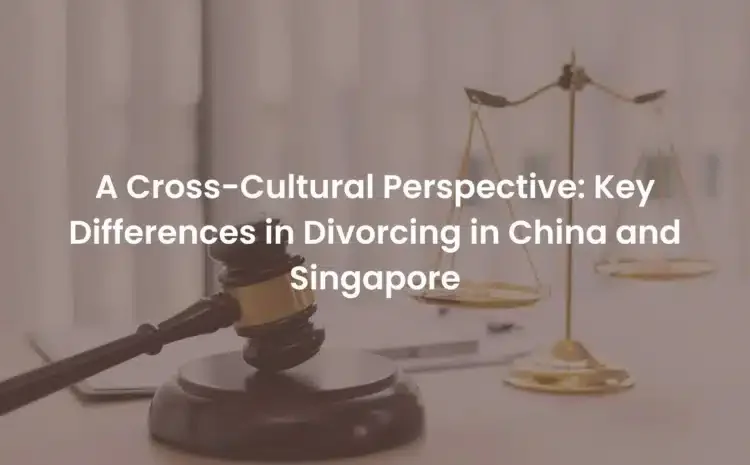A Cross-Cultural Perspective: Key Differences in Divorcing in China and Singapore
Introduction:
Divorce is a complex and emotionally charged process that varies across different countries. In this blog post, we’ll explore the key differences in divorcing in two Asian jurisdictions—China and Singapore. While both countries share some similarities, their legal and cultural landscapes shape the divorce process in distinct ways.
Legal Framework:
China:
China follows a one-party consent principle, where either spouse can unilaterally file for divorce without the need for mutual consent. However, certain conditions, such as abuse or abandonment, may affect the court’s decision.
The legal process can be influenced by the region, as there are differences in divorce laws between mainland China and special administrative regions like Hong Kong.
Singapore:
Singapore, on the other hand, requires couples to have been married for at least three years before filing for divorce, unless they can prove exceptional hardship or other extenuating circumstances.
The city-state follows a no-fault divorce system, where the court does not assign blame to either party. Irretrievable breakdown of the marriage is the primary ground for divorce.
Cultural Influences:
China:
Cultural and familial expectations in China often place significant pressure on couples to maintain the institution of marriage. Divorce may still carry a social stigma, particularly in more traditional communities.
Property division in China is influenced by the concept of “community property,” where assets acquired during the marriage are typically considered joint property.
Singapore:
Singapore, with its diverse population, reflects a more cosmopolitan approach to divorce. The society is generally more accepting of the idea that marriages may not always last a lifetime.
The legal system in Singapore considers the financial contributions of each spouse during the marriage when dividing assets, aiming for a fair distribution rather than a strict equal split.
Child Custody:
China:
Child custody decisions are typically made based on the best interests of the child. In practice, the mother often receives custody, especially for younger children, but this can vary depending on individual circumstances.
Singapore:
In Singapore, the court emphasizes co-parenting arrangements, encouraging both parents to remain actively involved in the child’s life post-divorce. The primary consideration is the child’s welfare.
Alimony and Financial Support:
China:
China does not have a standardized alimony system, and spousal support is generally less common. However, the court may order financial support in specific cases, considering factors such as income disparities and the length of the marriage.
Singapore:
Singapore follows a needs-based approach to alimony, where the court assesses the financial needs of the dependent spouse. Factors such as age, health, financial contributions, and the standard of living during the marriage are considered.
Conclusion:
Divorcing in China and Singapore involves navigating distinct legal frameworks and cultural influences. Understanding the key differences is essential for individuals going through this challenging process. While both countries aim to provide fair resolutions, the nuances in their legal systems reflect their unique societal values and expectations regarding marriage and family. As divorce continues to be a part of modern life, these comparisons offer valuable insights into the evolving dynamics of family law in these Asian jurisdictions.

